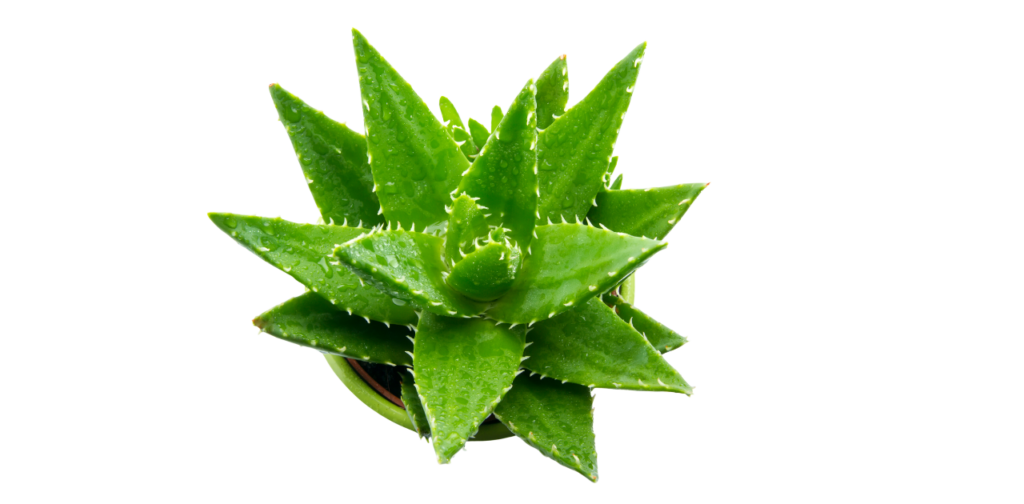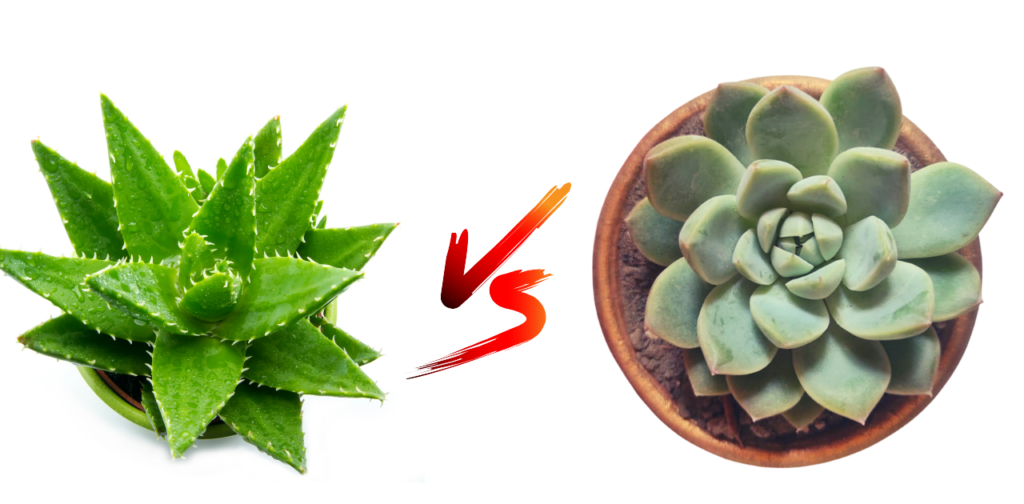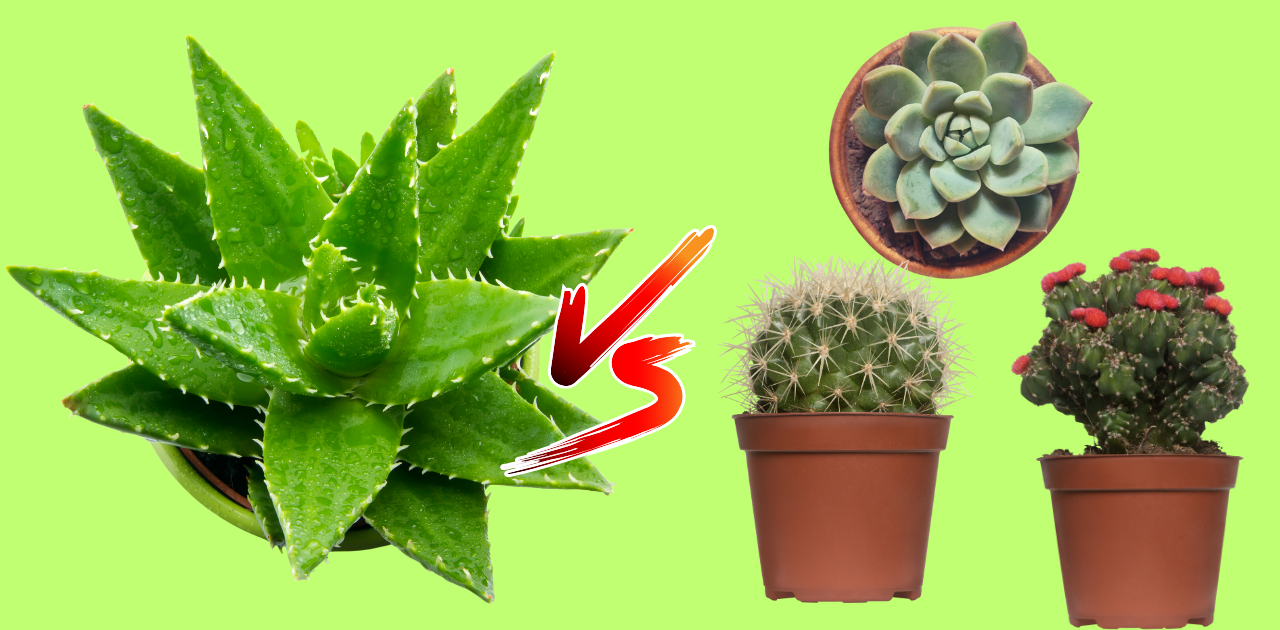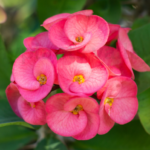Aloe Vera, known for its medicinal properties and versatile applications. Often finds itself at the centre of a botanical misconception: is it truly a cactus? While its spiky leaves and desert-dwelling nature might suggest a kinship with the iconic cactus, the truth lies beyond the thorns. This article unravels the botanical truth behind Aloe Vera’s identity and its relationship with cacti. Despite sharing some similarities with cacti, Aloe Vera belongs to a different botanical family altogether, shedding light on the distinct characteristics that set it apart. By exploring the evolutionary background, cultural significance, and practical uses of Aloe Vera, we delve into the fascinating world of succulents, dispelling common myths along the way.
Join us as we journey beyond the thorns to uncover the truth about the Aloe Vera plant.
About Aloe Vera Plant

Aloe vera, scientifically known as Aloe barbadensis miller, is a perennial succulent plant renowned for its therapeutic properties and ornamental appeal. Native to the Arabian Peninsula, it has been cultivated for centuries for its medicinal, cosmetic, and decorative uses. The aloe vera plant typically features thick, fleshy leaves arranged in a rosette pattern, growing upright from a central stem or base. These lance-shaped leaves can reach 18-30 inches long and are characterized by green colour with a grey-green or bluish hue tint.
One of the most notable features of the aloe vera plant is its succulent nature, enabling it to store large amounts of water in its leaves, stems, and roots. This adaptation allows the plant to thrive in arid, drought-prone environments by retaining moisture during periods of limited rainfall. Aside from its moisture-retaining capabilities, Aloe vera leaves contain a gel-like substance known as aloe gel, rich in bioactive compounds such as vitamins, minerals, amino acids, and polysaccharides. This gel is widely recognized for its soothing, moisturizing, and healing properties, making it a popular ingredient in skincare, haircare, and medicinal products.
Categorizing Aloe Vera
| Category | Details |
| Family | Asphodelaceae (formerly Liliaceae) |
| Genus | Aloe |
| Species | Aloe barbadensis miller |
| Common Name | Aloe vera |
| Native Habitat | Arabian Peninsula |
| Plant Type | Perennial succulent |
| Leaf Characteristics | Thick, fleshy, lance-shaped leaves arranged in a rosette pattern |
| Leaf Color | Green with a tint of gray-green or bluish hue |
| Water Storage | Succulent nature allows for the storage of water in leaves, stems, and roots |
| Gel Content | Leaves contain a gel-like substance rich in bioactive compounds, including vitamins and minerals |
| Flowering | Produces yellow tubular flowers on tall spikes, blooming sporadically throughout the year |
| Ecological Role | Attracts pollinators like bees and hummingbirds |
Despite its distinct appearance, Aloe vera must be more clearly understood in terms of its botanical categorization. To properly categorize aloe vera, it’s essential to delve into plant taxonomy and understand where this versatile succulent fits in the broader classification system. At the outset, recognizing that aloe vera belongs to the plant family Asphodelaceae, formerly known as Liliaceae, is crucial. This family encompasses a diverse range of plants, including other species of Aloe, kniphofia (red hot pokers), and some ornamental bulbs. Within the Asphodelaceae family, aloe vera falls into the genus Aloe, which comprises over 500 species of succulent plants.
Aloe Vera vs. Cactus
When comparing aloe vera to cacti, it’s essential to recognize their differences and similarities, including their botanical classification, physical characteristics, and ecological roles.
| Feature | Aloe Vera | Cactus |
| Family | Asphodelaceae (formerly Liliaceae) | Cactaceae |
| Genus | Aloe | Various genera within Cactaceae family |
| Native Habitat | Arabian Peninsula | Various habitats worldwide, predominantly in arid regions |
| Leaf Structure | Thick, fleshy leaves arranged in a rosette pattern | Typically, reduced leaves or spines arranged in clusters |
| Water Storage | Succulent nature allows for water storage in leaves, stems, and roots | Specialized tissues and structures for water storage, such as modified stems and thickened leaves |
| Flowering | Produces yellow tubular flowers on tall spikes, blooming sporadically throughout the year | Flowers vary widely in color, shape, and size, often blooming seasonally |
| Stem Structure | Typically, short or absent stems with leaves emerging directly from the base | Often characterized by a distinct stem structure, such as pads, columns, or segmented stems |
| Leaf Composition | Leaves contain a gel-like substance rich in bioactive compounds | Leaves may be reduced to spines or modified for photosynthesis |
| Ecological Role | Attracts pollinators like bees and hummingbirds, contributes to soil stabilization and ecosystem diversity | Provides habitat and food sources for wildlife, plays a role in desert ecosystems and soil stabilization |
Aloe Vera:
- Family and Genus: Aloe vera and the genus Aloe belong to the Asphodelaceae family.
- Native Habitat: Native to the Arabian Peninsula, aloe vera thrives in arid climates.
- Leaf Structure: It features thick, fleshy leaves arranged in a rosette pattern, storing water for survival.
- Water Storage: Aloe vera’s succulent nature allows it to store water in its leaves, stems, and roots.
- Flowering: Aloe vera sporadically produces yellow tubular flowers on tall spikes throughout the year.
- Stem Structure: Typically, aloe vera has short or absent stems, with leaves emerging directly from the base.
- Leaf Composition: The leaves contain a gel-like substance rich in bioactive compounds, prized for its medicinal and cosmetic properties.
- Ecological Role: Aloe vera attracts pollinators like bees and hummingbirds, contributing to soil stabilization and ecosystem diversity.
Cactus:

- Family and Genus: Cacti belong to the Cactaceae family, encompassing various genera.
- Native Habitat: Cacti are found in multiple habitats worldwide, predominantly in arid regions.
- Leaf Structure: Cacti typically have reduced leaves or spines arranged in clusters, minimizing water loss.
- Water Storage: They feature specialized tissues and structures for water storage, such as modified stems and thickened leaves.
- Flowering: Cacti exhibit various flower colours, shapes, and sizes, often blooming seasonally.
- Stem Structure: Cacti are often characterized by distinct stem structures, such as pads, columns, or segmented stems.
- Leaf Composition: Leaves may be reduced to spines or modified for photosynthesis, adapting to arid environments.
- Ecological Role: Cacti provide habitat and food sources for wildlife, playing a vital role in desert ecosystems and soil stabilization.
Is Aloe Vera a Cactus?
Despite its resemblance to cacti with its spiky leaves and desert habitat, Aloe Vera is not a cactus. While both are succulents, Aloe Vera belongs to the Asphodelaceae family, while cacti belong to the Cactaceae family. This botanical distinction is essential, as it highlights these plants’ unique evolutionary paths and characteristics. Aloe Vera‘s medicinal properties and cultural significance further differentiate it from cacti, showcasing its versatility and importance beyond its outward appearance. Understanding the true nature of Aloe Vera allows us to appreciate its distinct features and harness its benefits effectively.
Read to know more: Petal Leaf Succulent: A Beginner’s Full Guide to Grow and Care
Aloe Vera: A Succulent, Not a Cactus

When differentiating between aloe vera and cacti, it’s crucial to highlight that aloe vera is a succulent plant but not a member of the cactus family. Despite their shared ability to thrive in arid environments and store water, aloe vera and cacti exhibit significant differences in botanical classification, physical characteristics, and ecological roles.
Aloe Vera, often mistaken for a cactus due to its succulent nature, is distinct from cacti. Belonging to the Asphodelaceae family, it differs from cacti of the Cactaceae family. Despite their shared ability to thrive in arid conditions, Aloe Vera has unique evolutionary adaptations. Recognizing this distinction is vital for understanding its growth patterns and potential benefits.
By acknowledging Aloe Vera as a succulent, we can better appreciate and utilize its characteristics effectively. Whether for its medicinal properties, skincare benefits, or ornamental appeal, Aloe Vera stands out as a versatile plant deserving of recognition beyond its outward resemblance to cacti. Understanding its true identity opens possibilities for harnessing its numerous advantages in various aspects of our lives.
Cultural Significance
Beyond its botanical attributes, Aloe Vera holds significant cultural importance in many societies worldwide. Across various cultures, Aloe Vera has been revered for its medicinal properties and is believed to possess healing powers for a wide array of ailments. In ancient civilizations such as Egypt, Aloe Vera was referred to as the “plant of immortality” and was often depicted in wall paintings and used in burial rituals. Similarly, in traditional Chinese medicine, Aloe Vera has been utilized for centuries to treat skin conditions, digestive issues, and more.
Moreover, Aloe Vera has a rich history of folklore and superstitions in different cultures. In some regions, it is believed to ward off evil spirits when planted near the home, while in others, it is seen as a symbol of protection and prosperity. These cultural beliefs and practices continue to shape the perception of Aloe Vera, adding layers of significance beyond its botanical characteristics. Understanding the cultural context surrounding Aloe Vera enhances our appreciation for its multifaceted role in societies worldwide.
Mythbusting: Aloe Vera and Cactus Connection
Despite their similar appearance and habitat preferences, Aloe Vera and cacti are not closely related. The misconception that Aloe Vera is a type of cactus stems from their shared succulent nature and desert-dwelling habits. However, botanical classification reveals that Aloe Vera belongs to the Asphodelaceae family, while cacti are part of the Cactaceae family. This fundamental difference in taxonomy underscores their evolutionary divergence and distinct characteristics.
Understanding this distinction is crucial for dispelling the myth of the Aloe Vera-cactus connection. By recognizing aloe vera as a separate entity from cacti, we can more accurately appreciate its unique properties and potential benefits. This clarification also helps avoid misinformation and ensures that aloe vera is recognized and utilized appropriately for medicinal, cosmetic, and ornamental purposes.
Read Also: Why won’t my Christmas cactus bloom: the Secrets Behind a Non-Blooming
Aloe Vera in Cosmetics and Skincare

Aloe vera’s versatility extends beyond its medicinal uses into cosmetics and skincare. Its soothing and moisturizing properties make it a popular ingredient in various skincare products, including lotions, creams, and moisturizers. Aloe ability to hydrate the skin without leaving a greasy residue makes it particularly suitable for sensitive or acne-prone skin. Its anti-inflammatory and antibacterial properties can help alleviate skin irritations and promote healing, making it a staple in many skincare routines.
Commercial uses and products
Aloe Vera’s widespread popularity has led to its incorporation into many commercial products, ranging from beverages and supplements to hair care products and clothing fabrics. Its natural healing properties and gentle nature make it a sought-after ingredient in the cosmetics, pharmaceutical, and food industries. Aloe Vera’s versatility knows no bounds in the commercial market, from soothing sunburns to promoting hair growth.
Caring for Aloe Vera at Home
Caring for Aloe Vera at home is relatively straightforward, making it an ideal plant for beginners and experienced gardeners. Aloe Vera thrives in well-draining soil and bright, indirect sunlight. Overwatering is one of the most common mistakes, as Aloe Vera prefers to dry out between waterings. Propagation is simple, as new plants can be grown from offsets or “pups” forming around mature plants’ bases. Aloe Vera can flourish indoors or outdoors with minimal maintenance and proper care, adding beauty and functionality to any space.
Conclusion
In conclusion, Aloe Vera is a remarkable plant with a rich history, diverse uses, and unique characteristics. Despite its often mistakes identity as a cactus, Aloe Vera stands alone as a member of the Asphodelaceae family, distinct from cacti. Its medicinal, cosmetic, and ornamental value makes it a cherished plant in many cultures worldwide. By dispelling myths and understanding its true nature. we can fully appreciate the benefits and potential of Aloe Vera in various aspects of our lives.
FAQs
No, Aloe Vera belongs to the Asphodelaceae family, while cacti belong to the Cactaceae family.
Can Aloe Vera survive in arid environments like cacti?
Aloe Vera is adapted to thrive in arid conditions but prefers well-draining soil and indirect sunlight.
How do you differentiate between Aloe Vera and cactus plants?
Aloe Vera has softer, fleshy leaves arranged in a rosette, while cacti typically have spines and are more cylindrical.
Are there any dangers in confusing Aloe Vera with a cactus?
While both plants are generally safe, confusion could lead to incorrect plant care or improper use of Aloe Vera gel.
Can I use Aloe Vera gel interchangeably with cactus gel?
While both plants have similar soothing properties. it’s best to use products specifically formulated with Aloe Vera or cactus gel for optimal results.







